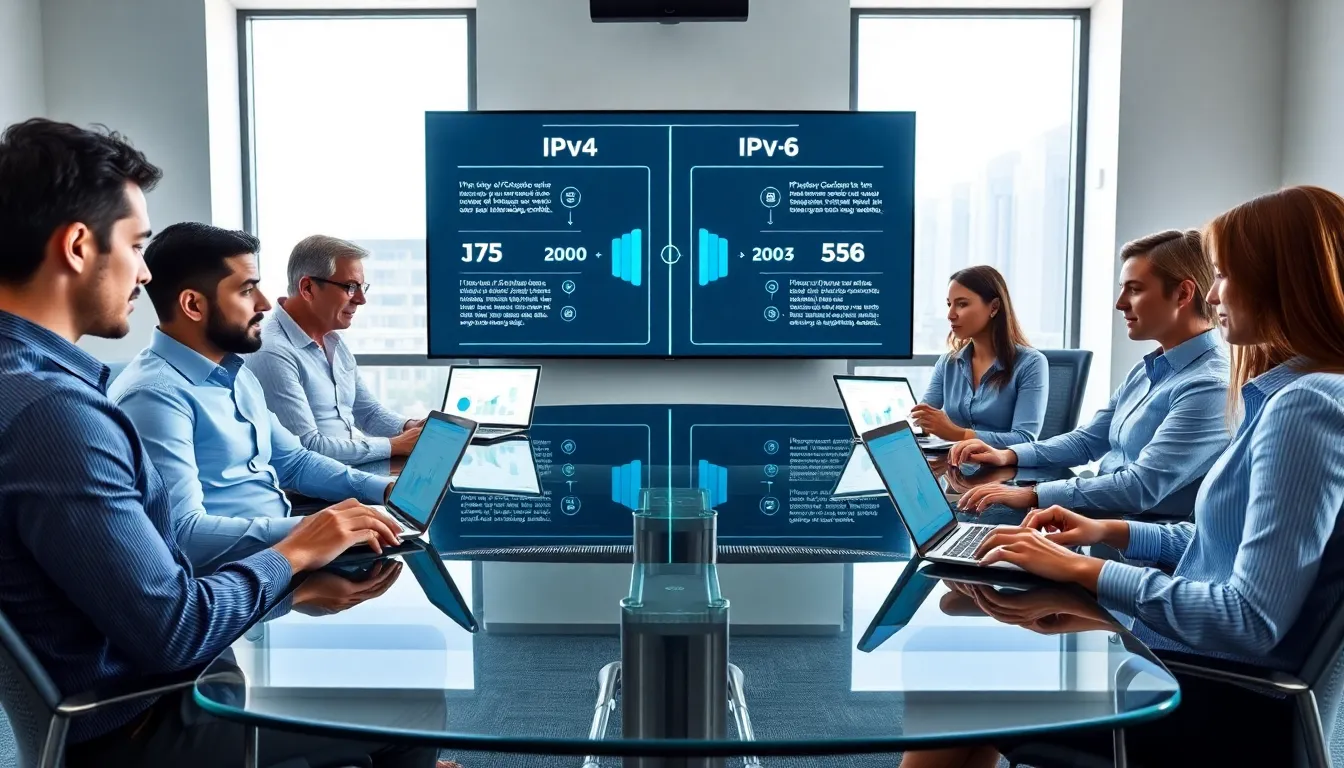Welcome to the intriguing realm of IP addresses. They’re like the digital version of your home address, except instead of sending birthday cards, they route your internet traffic. Ever heard of 111.90.150.288? Yeah, it sounds complex, but stick around. This article will clarify everything you need to know, without making your head spin, we promise. So, grab your virtual magnifying glass and let’s jump into it.
Table of Contents
ToggleWhat Is an IP Address?

An IP address, short for Internet Protocol address, is a unique identifier assigned to each device that connects to the internet. Think of it as your device’s personal ID card. Each time your device accesses the internet, it uses this address to communicate with servers and other devices.
Types of IP Addresses
There are two main types of IP addresses: static and dynamic. Static IP addresses remain constant over time. They’re often used by servers or devices requiring consistent connections. Dynamic IPs, on the other hand, can change every time a device connects to the internet. These are commonly assigned by your Internet Service Provider (ISP) and allow for more efficient management of IP resources.
Public vs. Private IP Addresses
Public IP addresses are accessible from the internet and are assigned by your ISP. They’re used for communication between your device and the wider internet. Private IP addresses, but, are used within a private network, like your home Wi-Fi, allowing devices to communicate locally without exposing them to the entire internet.
IPv4 vs. IPv6
IP addresses come in two versions: IPv4 and IPv6. IPv4 is the older version and consists of four sets of numbers separated by periods, such as 192.168.1.1. With the ever-increasing number of devices online, IPv6 was introduced, containing eight groups of hexadecimal numbers, making it vastly larger and more accommodating for the myriad devices today.
Common Uses of IP Addresses
IP addresses serve numerous functions in the digital realm. They help communication, enable geolocation, and even aid in network management.
For one, the primary purpose is to route data packets to the correct destination. Every time you send an email or open a webpage, your IP address helps route the information, ensuring it reaches the right spot.
Also, businesses leverage IP addresses for geolocation, allowing them to tailor content based on a user’s location. Have you ever noticed how some websites offer different products or services based on where you’re browsing from? That’s the magic of geolocation at play.
Also, companies use IP addresses for network management. Firewalls and security protocols often rely on IP addresses to monitor and control incoming and outgoing traffic, thereby enhancing online security.
How to Find Your IP Address
Curious about how to find your IP address? It’s pretty straightforward.
For most devices, visiting a website like “whatismyip.com” will display your public IP address instantly. Alternatively, if you’re on a Windows device, you can use the command prompt. Just type in ‘cmd’ in your search bar, then enter ‘ipconfig’, and voila. Your local IP address pops right up.
Apple users can find their IP address by going to System Preferences, selecting Network, and clicking on the connected network. For mobile devices, simply navigate to the settings and look for network information. That’s all it takes, no rocket science required.
Is 111.90.150.288 a Valid IP Address?
Now let’s address the elephant in the room: Is 111.90.150.288 a valid IP address? The answer is yes. This address follows the correct format seen in IPv4 addresses. But, validation does not equate to function or accessibility.
Potential Issues with Invalid IP Addresses
An invalid IP address can lead to a range of issues. From network connectivity problems to being unable to access certain services, it can be frustrating. Invalid addresses might even occur if there’s a configuration error in a network router, leading to an IP conflict where two devices attempt to use the same address.
How to Troubleshoot IP Address Issues
If you suspect you’re facing an IP issue, start with some basic troubleshooting. Restarting your router may solve temporary glitches. Next, ensure your device is set to obtain IP addresses automatically. If all else fails, consider contacting your ISP for assistance. They can help in diagnosing deeper network issues that could be affecting your IP address functionality.


